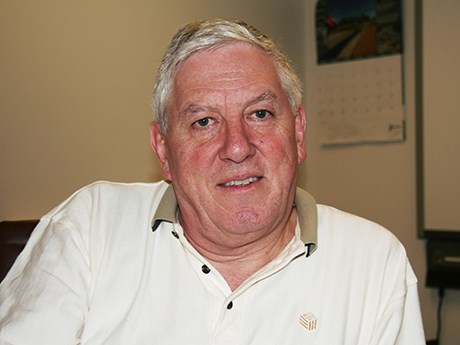When Rio Tinto embarked on its odyssey to redefine mining, one of the sources of brainpower it tapped was Sudbury’s Centre for Excellence in Mining Innovation (CEMI).
“In the old days, mining companies like Noranda had their own research centres, but these centres were dismantled or downsized to the point that, today, mining companies don’t necessarily have the research and development talent they need,” said Peter Kaiser, CEMI’s vice-president, research.
“Rio’s approach was to establish centres of excellence at key institutions. They have one in Perth, one in Melbourne and one at Imperial College in London. Each one is focused on a different aspect. Perth, for example, is focused on materials and Melbourne on automation. When they came to the mining side, they needed a centre that focuses on underground mine construction.
“They came to us because they need geomechanics knowledge and the Canadian geomechanics community is very strong. They also like the CEMI model, which is that we’re not tied to a university. We’re an independent corporation and we can do work with any university.”
CEMI defines the questions that need to be answered and looks for the best people to find the solution - regardless of where they are.
Rio Tinto engaged CEMI to support the development of tunnel boring technology for its Mine of the Future project and to work with Atlas Copco, Aker Wirth and Herrnknecht – the three companies commissioned to build the machines – to ensure they are optimized for the rock conditions anticipated and that safety issues are addressed.
An Aker Wirth tunnel boring system is currently in transit to Rio’s Northparkes Mine in Australia, an Atlas Copco borer with a different design has just been commissioned and a shaft borer to be built by Herrenknecht is scheduled for trials in 2014.
Rio Tinto saw a need for new mining technology to speed the development of the large, low-grade underground mines that will become more and more prevalent as its open pit operations are mined out.
These mines will typically produce 100,000 tonnes a day. “That’s huge compared to mines in Sudbury, which are typically in the 6,000 plus range,” said Kaiser, who estimates the total production from the mines in the Sudbury Basin at only 30,000 tonnes per day.
“What that means is you have to have a manufacturing process like a car plant. Everything has to be like a factory. That leads to caving operations as the primary model.”
A typical mass mine will have to develop up to 50 kilometres of tunnels per year and, at any one time, Rio Tinto expects to have five shafts under construction.
Using existing drill and blast technology is too slow, and there’s a fundamental principle that time is money, said Kaiser. This is, in essence, what’s driving Rio Tinto’s Mine of the Future project.
Using traditional drill and blast techniques in a 5 x 5-metre tunnel, you’re limited to one piece of equipment at a time at the face, he explained.
“You come in and drill, take the equipment out, you blast, then you muck. There’s a lot of activity and double handling of material that doesn’t allow you to get the higher rates of advance. The only way in their view is if you make a machine that can excavate, support and muck all simultaneously.”
Tunnel borers are expected to achieve advance rates of 10 metres per day, approximately three times the current advance rate for drill and blast methodology, though ironically, “if you go 20 years back, we did more than 15 metres a day,” noted Kaiser, adding “we can drill faster, but we don’t” for reasons of safety.
The two tunnel borers commissioned by Rio Tinto are 100 to 120 metres long, excavate a 6-metre opening and are able to change direction, which is important in a block cave mine. They install support, shotcrete, and muck all at the same time.
The Atlas Copco machine employs disk cutters that chip the rock by pushing against the face, while the Aker Wirth borer functions on the principle of undercutting, said Kaiser. “Instead of having a disk that works under compression, it’s a disk that attacks the rock laterally. Both machines have operators onboard.
The Herrenknecht shaft borer, the most innovative of the three machines, is an incredible 26 storeys high and only appropriate for very deep shafts of 1.5 kilometres or more. Broken rock is collected in a vertical conveyor with buckets and taken to surface. It, too, applies shotcrete and support.
“Material handling is the biggest problem because it produces so much rock in such a short period of time,” said Kaiser. “You can’t just have a regular bucket picking it up.”
CEMI will be responsible for collecting data from the machines once they are delivered and in operation to monitor their performance.
Kaiser admits there are skeptics.
“For every one who says it can be done, there are 10 who say it can’t be done, so there is no question that there is skepticism. In my mind, there is no question that it can be done. It’s just a question of whether it can be done economically, if the speed can be achieved and if it can be done safely.”



